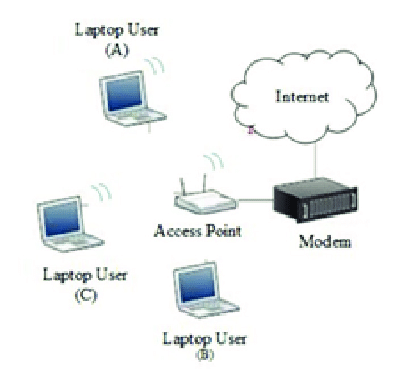Understanding Infrastructure Mode in Wireless Networking

Wireless networking has become increasingly popular in recent years for its ease of use and convenience. It allows users to connect to the internet without the hassle of cables and wires. One important concept in wireless networking is infrastructure mode. In this article, we will explore what infrastructure mode is, how it works, and its importance in wireless networking.
What is Infrastructure Mode?
Infrastructure mode is the most commonly used mode in wireless networking. It is used when multiple wireless devices need to connect to the internet through a central access point or wireless router. In this mode, the wireless devices, such as laptops, smartphones, and tablets, connect to the access point, which in turn connects to the wired network or the internet.
In infrastructure mode, the wireless devices communicate with each other through the access point. This means that if two wireless devices want to communicate with each other, they need to do so through the access point. The access point acts as a bridge between the wireless devices and the wired network.
How Does Infrastructure Mode Work?
Infrastructure mode works by using an access point or wireless router to create a wireless network. The access point is connected to a wired network, such as a modem or router. The access point creates a wireless signal, which is picked up by the wireless devices. The wireless devices then connect to the access point to access the internet.
In infrastructure mode, the wireless devices communicate with each other through the access point. The access point acts as a central hub for all the wireless devices on the network. When a wireless device wants to communicate with another device on the same network, it sends its data to the access point, which in turn forwards it to the destination device.
Why is Infrastructure Mode Important?
Infrastructure mode is important in wireless networking because it allows multiple devices to connect to the internet through a central hub. This means that wireless devices can communicate with each other through the access point, which makes it easier to share resources and collaborate on projects.
One advantage of infrastructure mode is that it allows for greater security. The access point can be configured to use security protocols such as WPA2 or WPA3, which encrypt the data transmitted over the network. This helps to prevent unauthorized access and protects the network from hackers and other threats.
Another advantage of infrastructure mode is that it allows for greater flexibility in network design. Multiple access points can be used to create larger wireless networks that cover a wider area. This allows for greater scalability and makes it easier to expand the network to meet the needs of a growing business or organization.
In conclusion, infrastructure mode is an important concept in wireless networking. It allows multiple wireless devices to connect to the internet through a central access point or wireless router. This mode enables greater collaboration and resource sharing among wireless devices, while also providing greater security and scalability. Understanding the advantages and disadvantages of infrastructure mode is crucial to designing and maintaining a successful wireless network.





